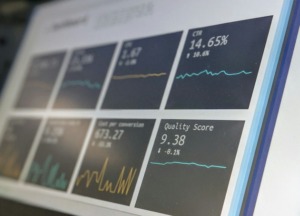Distributed software team performance hinges on measuring the right remote software development metrics. From task completion rate to remote team KPIs, understanding these indicators is vital. This guide dives into distributed team effectiveness and explores Agile team performance metrics for optimal results.
[ez-toc]Building high-performing distributed software teams requires a data-driven approach. Measuring key performance indicators (KPIs) like task completion rate and project delivery timelines provides valuable insights into your team’s effectiveness. This guide explores essential metrics for distributed software team performance, emphasizes the importance of continuous feedback and adaptation, and offers strategies for building a thriving remote team.
Maximize Remote Team Effectiveness with Data-Driven KPIs
To gain a more comprehensive understanding of your distributed software team’s performance, leverage data analytics tools to analyze and interpret various metrics. This can provide valuable insights into areas for improvement, identify trends, and measure the impact of changes.
- Key Performance Indicators (KPIs): Track and analyze KPIs such as task completion rate, project delivery timelines, customer satisfaction, code quality, and employee engagement.
- Data Visualization: Use data visualization tools to create charts, graphs, and dashboards that help you visualize trends and patterns in your team’s performance.
- Benchmarking: Compare your team’s performance to industry benchmarks or other similar teams.
- Root Cause Analysis: Investigate the underlying causes of performance issues to identify areas for improvement.
- Predictive Analytics: Use data analytics to predict future trends and anticipate potential challenges.
Beyond Code: 8 Essential Metrics to Drive Distributed Software Team Success
To effectively measure the success of your distributed team, it’s essential to track key performance indicators (KPIs) that align with your team’s goals and objectives. Here are some key metrics to consider:
- Task Completion Rate: Monitor the remote software development metrics like the percentage of tasks completed on time and to standard.
- Project Delivery Timelines: Effective distributed team performance measurement ensures that projects stay on track and meet deadlines.
- Customer Satisfaction: Measure customer satisfaction with the team’s deliverables and responsiveness.
- Team Engagement: Assess team morale, motivation, and overall satisfaction.
- Quality of Work: Evaluate the quality of the team’s output, such as bug rates or error rates.
- Innovation and Creativity: Measure the team’s ability to generate new ideas and solutions.
- Adaptability: Assess the team’s ability to adapt to changes and challenges. Adopting Agile team performance metrics can significantly enhance remote software team effectiveness by fostering adaptability and innovation.
- Collaboration and Communication: Evaluate the effectiveness of communication and collaboration within the team.

Aligning principles of deliberate action with concrete performance metrics is key to building profitable products.
Continuous Feedback: The Backbone of Remote Team Success
Continuous feedback and adaptation are essential for maintaining a high-performing distributed team. Regular feedback helps identify areas for improvement, celebrate successes, and ensure that the team is aligned with organizational goals.
- Regular Check-Ins: Conduct regular one-on-one meetings with team members to provide feedback, address concerns, and ensure they have the resources and support they need.
- 360-Degree Feedback: Gather feedback from team members, peers, and managers to get a comprehensive view of individual performance.
- Performance Reviews: Conduct regular performance reviews to assess team members’ contributions and identify areas for development.
- Learning and Development Opportunities: Invest in training and development programs to help team members stay up-to-date with the latest trends and technologies.
- Agile Methodology: Embrace an agile approach to project management, which emphasizes continuous feedback, adaptation, and iterative development.
How to Improve Distributed and/or Remote Team Performance
Now that you have the metrics, it’s time to take action! To build a high-performing distributed software team, focus on the following strategies:
- Clear Communication and Collaboration: Establish clear communication channels, encourage open dialogue, and utilize collaboration tools to facilitate effective teamwork.
- Empowerment and Autonomy: Empower team members to take ownership of their work, make decisions, and contribute to the team’s success.
- Continuous Learning and Development: Invest in training and development programs to help team members stay up-to-date with the latest technologies and best practices.
- Recognition and Rewards: Recognize and reward team members for their contributions to motivate and encourage high performance.
- Diversity and Inclusion: Foster a diverse and inclusive team culture that values different perspectives and experiences.
- Work-Life Balance: Promote a healthy work-life balance to prevent burnout and maintain employee satisfaction.
- Performance Management: Implement a performance management system to track individual and team performance, provide feedback, and set goals.
Ubiminds specializes in building and scaling high-performing distributed software teams. Our team of experts can help you:
- Analyze your team’s performance data to identify areas for improvement.
- Implement strategies to enhance team collaboration, communication, and productivity.
- Optimize your team’s processes to maximize efficiency and deliver exceptional results.
- Hire top-tier talent to strengthen your team and drive innovation.
Don’t wait any longer. Contact Ubiminds today to discuss your specific needs and learn how we can help you achieve your goals.
Integrating Agile Methodologies for Better Distributed Team Performance
Agile methodologies are designed to enhance flexibility, collaboration, and continuous improvement, which are critical for the success of distributed software teams. By integrating Agile frameworks like Scrum or Kanban, teams can better manage tasks, communicate more effectively, and respond quickly to changes in project scope or objectives.
- Sprint Planning and Reviews: Agile encourages regular sprint planning and review sessions, allowing distributed teams to set clear objectives and evaluate progress frequently. This keeps everyone aligned and focused on delivering incremental value, even when working remotely.
- Daily Stand-ups: Daily stand-up meetings provide a platform for team members to share updates, discuss challenges, and coordinate efforts, fostering better communication and collaboration across different time zones.
- Retrospectives: Regular retrospectives help teams reflect on what went well and identify areas for improvement, ensuring that lessons learned are continuously applied to enhance performance.
- Real-time Collaboration Tools: Leveraging tools like Jira, Trello, or Asana can streamline task management, making it easier for distributed teams to stay organized and productive.
By embracing Agile methodologies, distributed software teams can enhance their performance, improve adaptability, and maintain a high level of engagement and productivity.
Balancing Productivity and Well-being in Remote Teams
Maintaining a balance between productivity and well-being is essential for distributed teams. Without the right balance, teams risk burnout, reduced morale, and decreased performance. Here’s how to achieve this balance:
- Flexible Work Hours: Allowing team members to work flexible hours can help them manage their work-life balance more effectively. This flexibility accommodates different time zones and personal commitments, leading to happier, more productive employees.
- Regular Breaks and Downtime: Encourage regular breaks and downtime to prevent burnout. This can be as simple as promoting short breaks during work hours and ensuring that team members take their vacation days.
- Well-being Programs: Implement well-being programs that focus on mental and physical health. This might include virtual yoga sessions, mental health check-ins, or access to wellness apps.
- Clear Boundaries: Set clear boundaries between work and personal life. Encourage team members to disconnect after work hours and create a dedicated workspace to separate work from home life.
Balancing productivity and well-being not only enhances team performance but also contributes to long-term employee satisfaction and retention.
Leveraging Technology for Distributed Team Collaboration
Technology plays a pivotal role in enhancing collaboration and communication among distributed software teams. The right tools can bridge the gap between remote workers, making it easier to coordinate efforts and share knowledge.
- Communication Platforms: Use platforms like Slack, Microsoft Teams, or Zoom to facilitate real-time communication. These tools allow for instant messaging, video conferencing, and file sharing, ensuring that all team members stay connected and informed.
- Project Management Tools: Tools like Jira, Asana, or Trello help teams manage projects effectively, track progress, and assign tasks. These platforms offer features such as timelines, task dependencies, and progress tracking, which are crucial for distributed teams.
- Version Control Systems: Implement version control systems like Git to manage code changes and ensure that all team members can access the latest codebase. This is particularly important for distributed teams where multiple developers may be working on the same project simultaneously.
- Collaboration Suites: Google Workspace or Microsoft 365 offer a range of tools for document collaboration, enabling team members to work together on documents, spreadsheets, and presentations in real-time.
You’ll find a full list of tools to boost software team performance here.
Quick FAQ for “Distributed Software Team Performance”:
- Q: What are the best KPIs for distributed software teams?
A: The most effective KPIs include task completion rate, project delivery timelines, and customer satisfaction. - Q: How can I improve my distributed team’s performance?
A: Focus on clear communication, regular feedback, and continuous learning to enhance performance. - Q: Why is data analytics important for remote teams?
A: Data analytics helps identify trends, measure impact, and provide insights for continuous improvement. - Q: What role does feedback play in distributed software teams?
A: Regular feedback is crucial for aligning the team with goals and identifying areas for improvement.

International Marketing Leader, specialized in tech. Proud to have built marketing and business generation structures for some of the fastest-growing SaaS companies on both sides of the Atlantic (UK, DACH, Iberia, LatAm, and NorthAm). Big fan of motherhood, world music, marketing, and backpacking. A little bit nerdy too!








